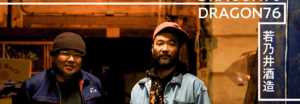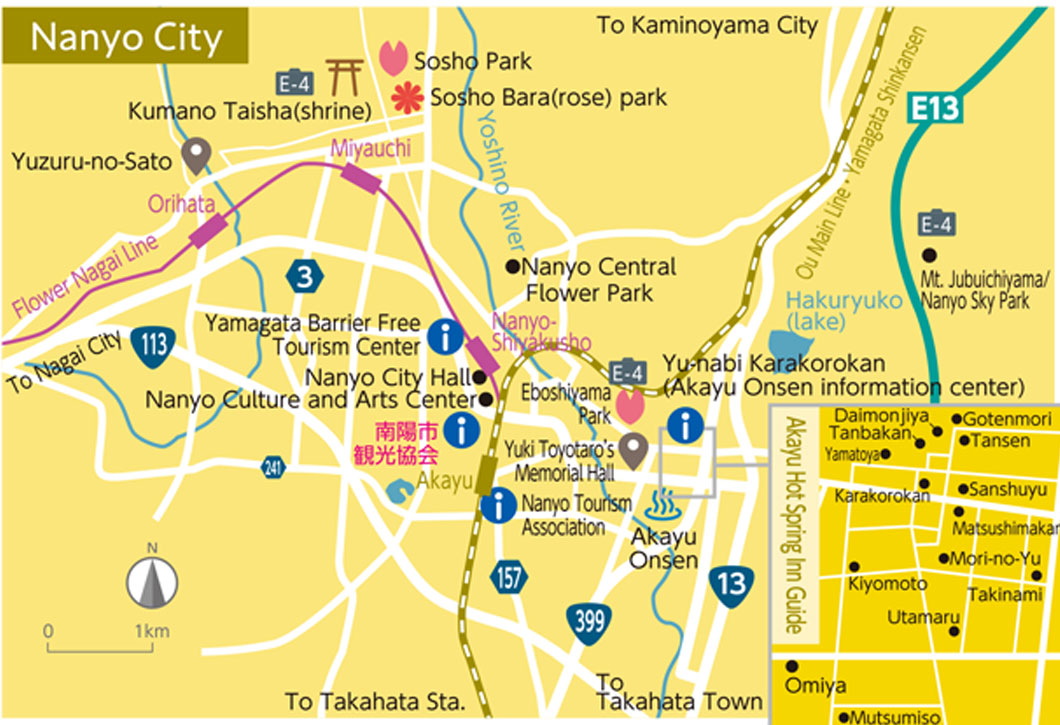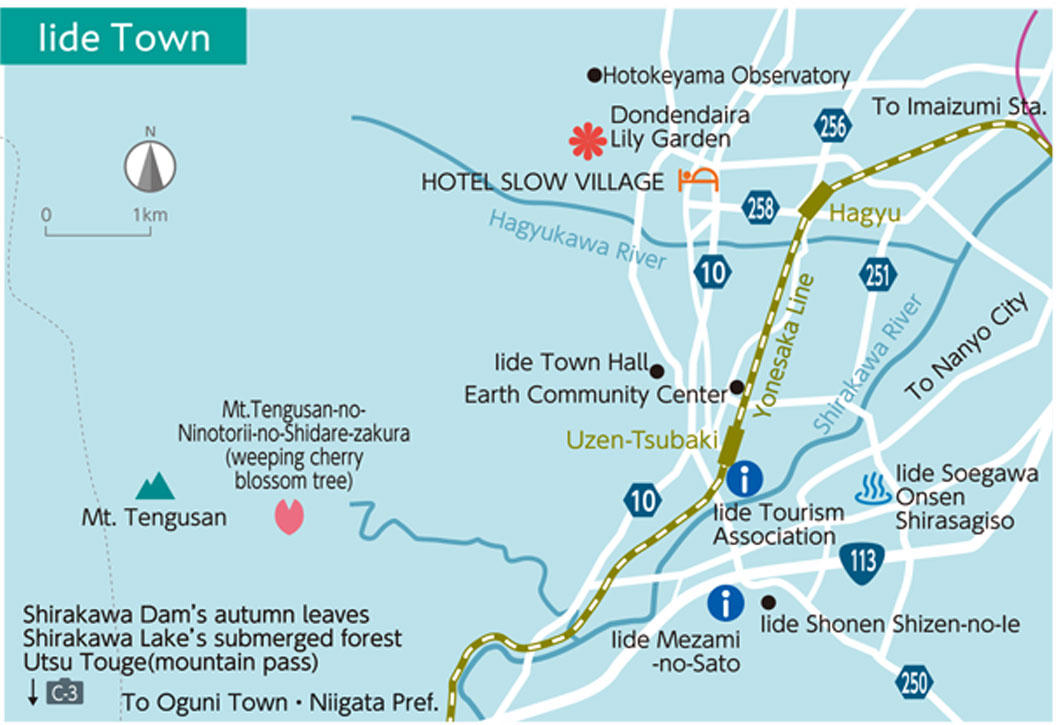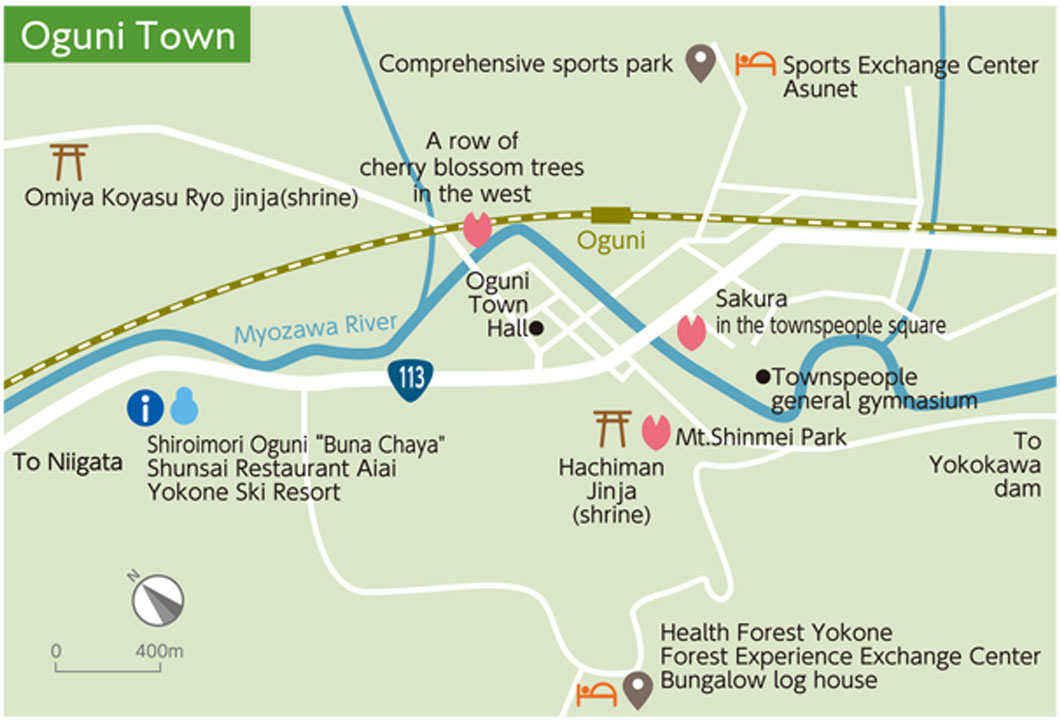
Live in sake brewing
The power of nature and the skill of the brewers
Shrines of the Okitama region, Japanese sake, and art come together for the OMIKI Project.
At Shirataka town’s Kamogawa Brewery, artist Ten Hundred experienced the history and tradition of Japan’s culture through sake brewing.
Their creation came together as life in nature comes together.

The tradition of sake and people that has continued since the Edo period
The occupation of one’s life creates flavor
Kamogawa brewery founded in 1741 in Ayukai, Shirataka Town continues to use the traditional sake making method kimoto zukuri. In the 280-year history of Kamogawa brewery, they once burnt down, but they received support from the local people and were rebuilt. They have been standing ever since. The 14th generation chief brewer, Suzuki Issei, said, “I’m not doing this alone. I’m being supported by the locals,” as he stood in the living room of his residence looking at a chart of his long family tree.
Because they made sake with beautiful scenery of the Asahi Mountain range, they first named the brewery “Asahi Masamune.” The chief sake brewer in the late Edo period apprenticed at a brewer called “Kagoyama” in Oyama, Tsuruoka City, hence the name today. There is a turtle shell with the inscription Meishu Kamogawa Asahi Masamune telling of the history of their name. Turtles have long lives and carry good fortune with them, so receiving one was a message of prosperity.
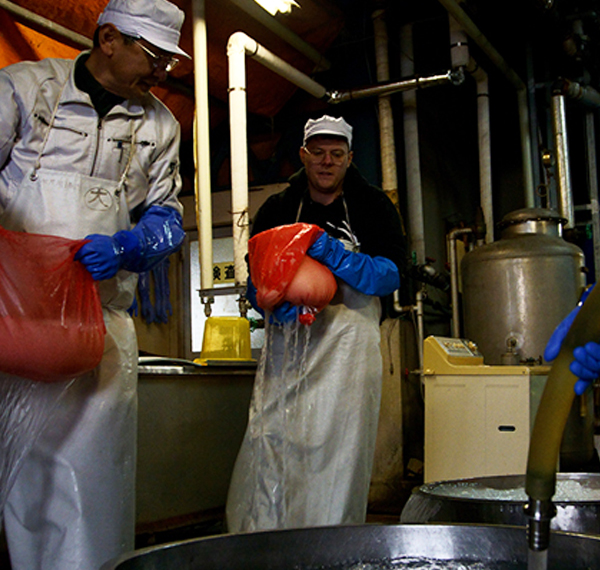
Commitment to making Kimoto *traditional sake yeast mash starter
Kamogawa Brewery’s sake has a light fruitiness and heartiness. All of their brands have the heartiness to also be drank warmed. Making the kimoto, yeast mash that converts the sugar to alcohol, by hand is what makes their sake stand out. By adding koji, yeast, and lactic acid bacteria to the steamed rice and water, it creates the basis of fermenting the sake by cultivating the yeast. This is what’s called Kimotozukuri. Lactic acid that grows from the added lactic acid bacteria kills unwanted bacteria harmful to sake. At Kamogawa Brewery, they use lactic acid bacteria that they monitor the growth of in the walls, air, and ceiling. “There’s naturally thousands of bacteria in the air, but here there lives a suitable number of bacteria for sake making to take place. The lactic acid bacteria for making sake gather around the yeast,” says Mr. Suzuki.
In the late Meiji Period, refined lactic acid started being used in a new sake brewing method called ‘Sokujo’. This new method prevents the deterioration of sake from unwanted bacteria, and shortens the brewing time. This lessened the burden in sake making, but there were cases of breweries trying to use the traditional method, kimotozukuri, after only using sokujo methods and not being able to make sake due to there not being enough lactic acid bacteria. Kamogawa Brewery decided to honor and keep using the flavorful traditional methods of sake brewing. “I was told by the teacher who taught me the theory of sake brewing that how you use the bacteria in the brewery shows your ability. Every year while making sake I’m reminded that bacteria play the main role. If we start thinking we are the one’s making the sake, then we will be unable to use the bacteria properly. Thinking about how the yeast will ferment for us leads to better results.”
The unique flavors that long-running breweries produce are from the yeast that live there. The chief brewer continues to make sake with keen senses as if they can communicate with the yeast.
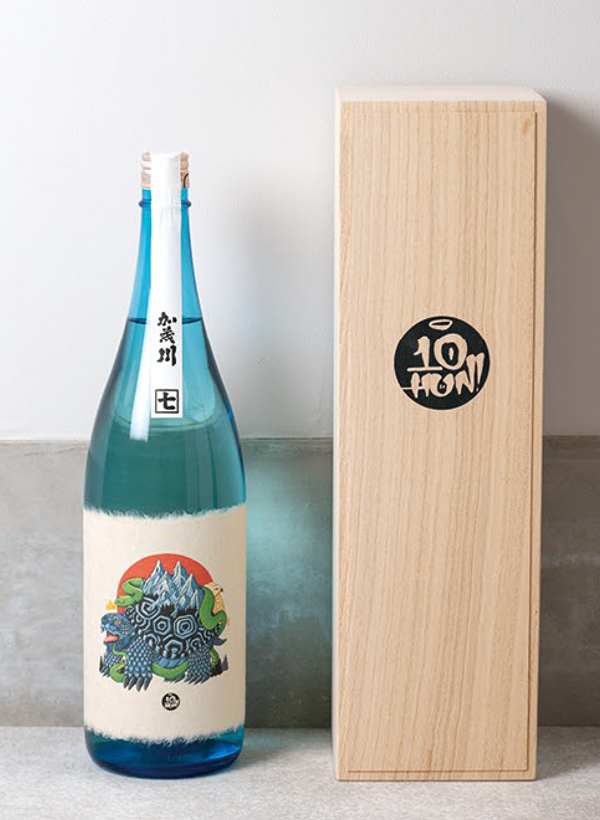
Japanese culture inspires creativity
“When Ten Hundred visited Kamogawa Brewery for the first time, I asked the chief brewer why they wanted to work together with an artist. Mr. Suzuki said, ‘We are both workers who create. That’s why I am fascinated in seeing how our sake will expand the artist’s image and how they will express our sake through art. I’m excited.’” The two share the same ideas for this project. The following days after the tour of the brewery they prayed at the revered Ayukai Hachimagu shrine built in the Heian period and experienced the process of removing the outer layer of rice for sake making called senmai. After some time, Ten Hundred also participated in the special traditional koji making. The solemn ritual, the exact method of sake brewing, and the heat of steamed rice furthered his understanding of Omiki, sacred sake offered at shrines.
Ten Hundred took great influence from participating in the sake brewing process that has continued from the 14th century and decided on Genbu, The Black Tortoise, as the motif for the label. Genbu is the god of the northern heaven. The appearance of Genbu is of a turtle, symbol of longevity and immortality, and a snake, symbol of reproduction and multiplication, entwined together. The imagery of Shirataka town blanketed in white and snow-capped mountains are also portrayed. The Japanese sake produced from the Omiki project so far illustrated Kurojiishi, Ho-Oh, and a dragon on their labels. Now with the addition of Genbu, the labels seem to portray the Four Sacred Beasts, gods who reign over the four cardinal directions. Koji, yeast, lactic acid, as well as the workers and artists’ cooperation have created sake that shines light on the local breweries. They have an originality found nowhere else.

Ten Hundred Gallery

Ten Hundred
He specializes in bright, colorful, imaginative character work and each art piece showcases a mysterious and original outlook on the world. He is inspired by cartoons and anime, street art and graffiti, comics, world cultures, religions, and folklore. He has shown work in Seattle, Portland, Denver, New York, Los Angeles, Kansas City, Berlin, Wien, Belfast, London, Tokyo, Yamagata, and Armação dos Búzios. He is vigorously working and creating murals around the world.

Recently he has done work with Amazon, Nordstrom, Converse, Jet Blue, Lenscrafters, Monster, Caffe Vita, Sasquatch Music Festival and more. He is even renowned for being a popular art YouTuber. He spends his time running his gallery shop “Statix” in Seattle creating clothing, toys and figurines, and designing art for businesses. He is engaged in a wide range of art activities that are not bound by conventional frameworks.
About the OMIKI Project
At the Yamagata Arcadia Tourism Bureau, as part of the Toyo Arcadia Project for developing omiyage (souvenirs) for the Yamagata area, we aim to promote the local area to the world through the uniquely Japanese culture, sake. Local breweries and world acknowledged graphic artists pair together to pray for the success of sake making, and develop original Japanese sake. We promote the “OMIKI Project” by selling omiyage. The project is to sell, develop, and promote “OMIKI” as high-brand “SAKE” to the world.
*OMIKI is sacred sake offered to the gods.


